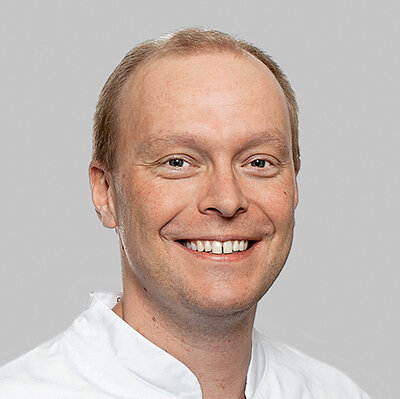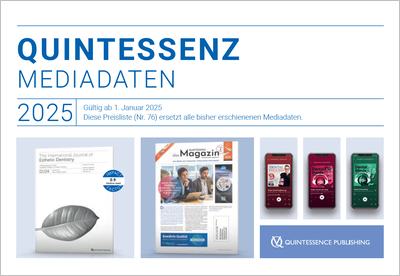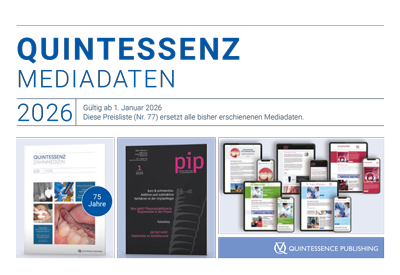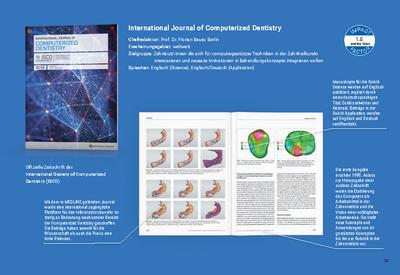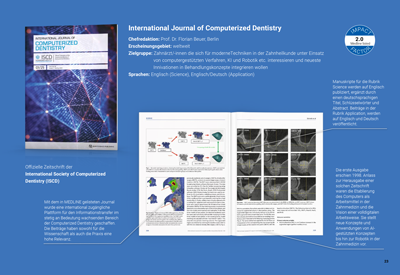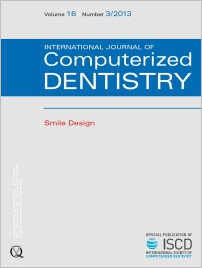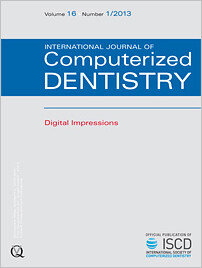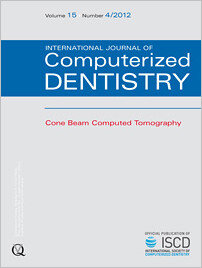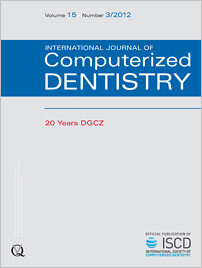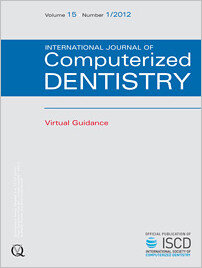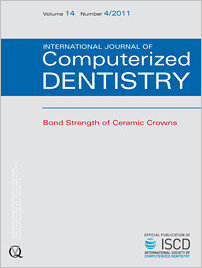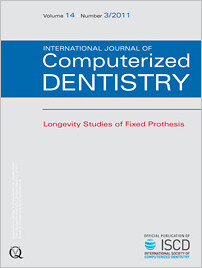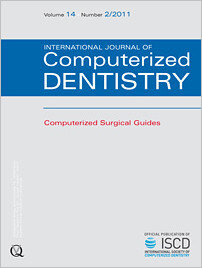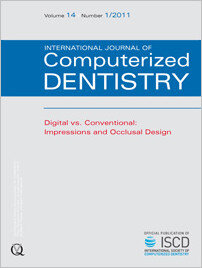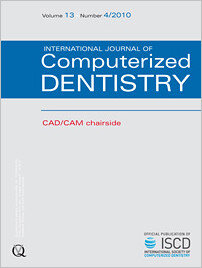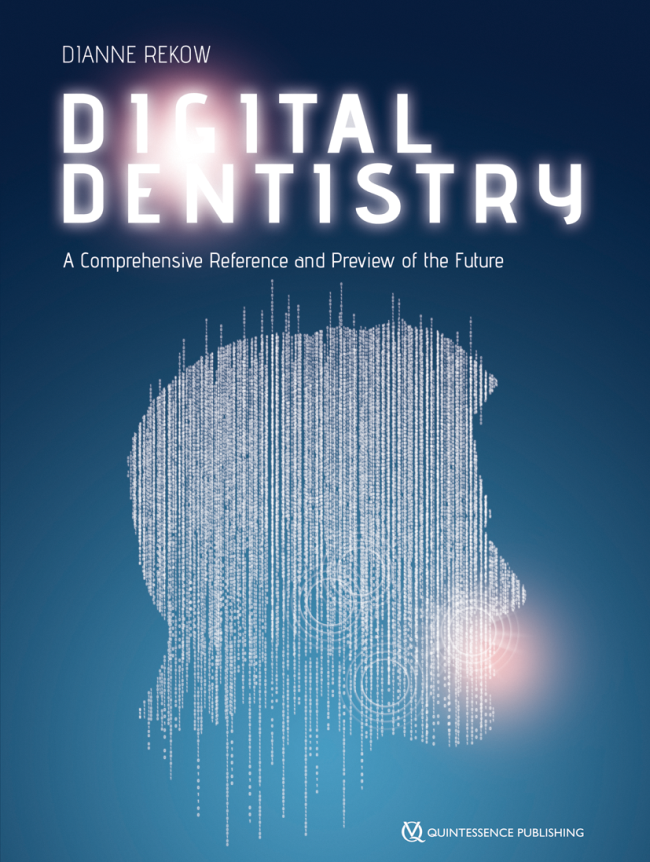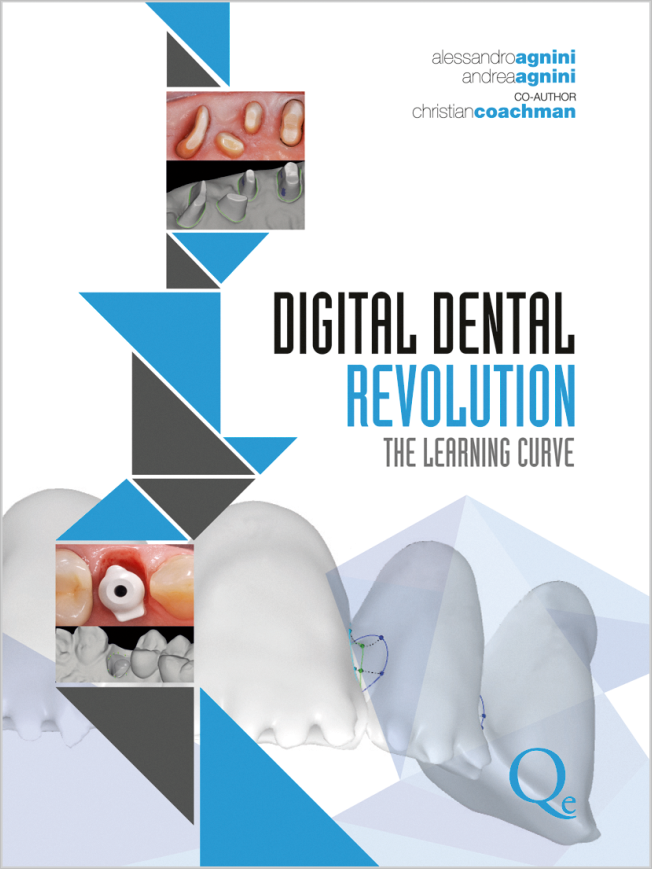PubMed ID (PMID): 24364192Pages 201-207, Language: English, GermanSailer, Benjamin F. / Geibel, Margrit-AnnVariations in angulation of the x-ray tube affect the appearance of insufficient approximal crown margins on intraoral radiographs. This study examines the impact of such angular variation on the assessment of digital radiographs using three different X-ray tubes - Heliodent DS (Sirona), Gendex Expert DC (KaVo Dental) and Focus (KaVo Dental) - as well as the Gendex Visualix eHD CCD sensor (KaVo Dental). The test specimens, crowned teeth 46 from two mandibles provided by the Institute of Anatomy and Cell Biology, were examined with each tube.The results indicate great differences in the angles indicative of insufficient crown margins on X-ray images. Because of beam divergence and the crown marginal gap, the length and width of which frequently varies, it is difficult to infer any optimum angle from the data. This leads to the conclusion that at present, it is not possible to establish ideal angles for visualization of insufficient approximal crown margins.
Keywords: X-ray, intraoral, digital, crown margin, angulation, angle
PubMed ID (PMID): 24364193Pages 209-224, Language: English, GermanWeggen, Tjerk / Schindler, Hans J. / Kordaß, Bernd / Hugger, AlfonsIncreased resting electromyographic activity (EMG), reduced EMG during maximum voluntary clenching, and a shift to lower frequencies of the mean/median power frequency (MPF) of the EMG power spectrum have been reported for patients with temporomandibular disorder pain. It is unclear, however, whether these electrophysiological phenomena can be correlated with symptom improvement during the follow-up of myofascial pain patients in treatment.The objective of this study was to monitor the therapeutic effects of two different splint concepts (standard method and a complex splint procedure assisted by transcutaneous electrical nerve stimulation, TENS) for a period of 12 weeks, by use of clinical outcome criteria and EMG recordings. We tested the hypotheses that both measures evaluated will change in parallel during treatment and that the different splint concepts will result in no outcome differences between the variables studied. For two randomly selected groups, each containing 20 non-chronic myofascial pain patients, the clinical course after splint insertion was documented over a period of 12 weeks on the basis of pain and pain on palpation ratings, in parallel with EMG recording. Baseline values were monitored for matched healthy subjects. Although there was no correlation between the course of symptom improvement and significant changes in EMG data, MPF differed significantly (p 0.05) between healthy subjects and patients. The therapeutic effects of splints of different clinical complexity differed significantly (p 0.05) between the patient groups, in favor of the complex oral appliances, and substantial (p 0.001) but temporary pain relief was achieved by additional TENS. For nonchronic myofascial TMD pain patients treated with splints, the course of symptom improvement is not paralleled by significant changes in EMG data. MPF can, however, be used to distinguish between healthy subjects and patients. Splints of different clinical complexity differ in their therapeutic effects in non-chronic myofascial TMD patients, and substantial temporarily limited pain relief can be achieved by additional muscle stimulation by TENS.
Keywords: myofascial temporomandibular disorder pain, EMG, TENS, MPF, occlusal splint
PubMed ID (PMID): 24364194Pages 225-239, Language: English, GermanHugger, Sybille / Kordaß, Bernd / Hugger, AlfonsThe fourth part of this literature review on the clinical relevance of surface electromyography (EMG) of the masticatory muscles summarizes the results of clinical studies in patients with temporomandibular disorders (TMD), preferably randomized controlled trials, examining the impact of changes to the dynamic occlusion or the effects of occlusal splints and other treatment measures on electromyographic activity. Surface electromyography is a useful tool for neuromuscular functional analysis in the field of dentistry. In combination with a thorough history and detailed clinical examination, it is able to provide objective, documentable, valid and reproducible information about the individual functional status of the masticatory muscles if the user strictly adheres to the specific guidelines.
Keywords: electromyography, review, chewing, masticatory muscles, fatigue, maximal voluntary contraction, symmetry, resting activity, splint therapy, oral rehabilitation
PubMed ID (PMID): 24364195Pages 241-254, Language: English, GermanAkhare, Pankaj J. / Dagab, Akshay M. / Alle, Rajkumar S. / Shenoy, Usha / Garla, VenkateshThe purpose was to compare the reliability of landmark identification and linear and angular measurements in conventional versus digital cephalometry. Using 50 cephalometric radiographs, four orthodontic residents identified 19 cephalometric landmarks followed by 18 linear and angular measurements of the same radiographs. The values of 18 measurements were compared to quantify the measurement difference and interobserver errors between these two methods. Multivariate analysis of variance showed that the "cephalometric radiograph" and "landmark" variation had greater influence than that of "method" (landmark identification on original radiograph / on digital). A statistically significant difference for interobserver errors between the two methods was noted only for 5 out of 19 cephalometric landmarks. The most accurately identified landmark in conventional and digitized method was Sella (S), followed by Nasion (N). Landmarks requiring further scrutiny in digital images were Porion (P) Articulare, ANS, UM, and LM. The advantages of digital cephalometry were also substantiated.
Keywords: computer-aided cephalometric analysis, digital imaging, cephalometric measurements
PubMed ID (PMID): 24364196Pages 255-269, Language: English, GermanKurbad, Andreas / Kurbad, SusanneRestorations in the esthetic zone can now be enhanced using software tools. In addition to the design of the restoration itself, a part or all of the patient's face can be displayed on the monitor to increase the predictability of treatment results. Using the Smile Design components of the Cerec and inLab software, a digital photograph of the patient can be projected onto a three-dimensional dummy head. In addition to its use for the enhancement of the CAD process, this technology can also be utilized for marketing purposes.
Keywords: CAD/CAM, esthetics, Smile Design, all-ceramic, veneers
